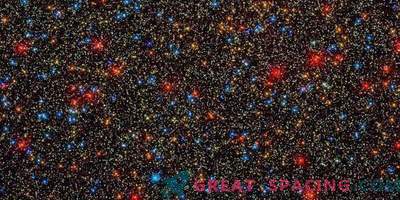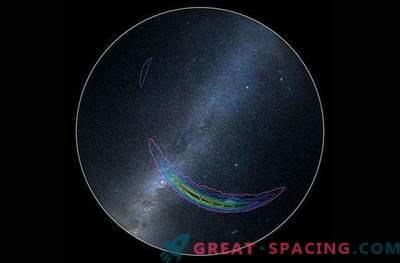
If you get out of the Solar System, you will be among the stellar neighbors living their own lives. But which star is the closest?
Star neighborhood
The closest star system to us is Alpha Centauri. It is represented by three stars, among which we are interested in the red dwarf Proxima Centauri. Lives at a distance of 4.22 light years. Although it still seems to us a huge distance, but in astronomical terms we can say that it is almost at hand.
The star is inferior to the solar diameter and mass of 7 times. It has really modest dimensions, because only one and a half it exceeds the diameter of Jupiter. It is extremely difficult to find it, because red dwarfs do not release a large amount of energy. Therefore, it was noticed only in 1915.
Find the planet

In 2016, we managed to confirm the existence of the planet Proxima Centauri b
Researchers are particularly keenly interested in the study of Proxima Centauri due to the presence of the planet. Why? Well, our spaceships are still pretty slow. Therefore, if you send the device, it is extremely convenient to have a foreign world literally at your fingertips.
The first reviews were carried out with the help of the space telescope Hubble, and it seemed that he had found the world. However, further searches could not confirm. It was only lucky in 2016 when observing a telescope of a submillimeter array ALMA (Chile).
There was no limit to the joy of scientists, because we are talking about a world of the earth type rotating in a star’s habitat zone (enough heat to form water and conditions for life to appear). Unfortunately, further studies have provided disappointing information. Star flares observed in 2017 hint at emissions of a large portion of radiation. Most likely, the planet Proxima Centauri b has been irradiated for millions of years by a strong radiation flux. So, it will not have a stable atmospheric layer, and living organisms are deprived of protection. True, some scientists do not give up and believe that rare forms could even adapt to such conditions.
Go to Proxima Centauri.

With modern technology, a flight to Proxima Centauri can last 78,000 years.
If you decide to get to the nearest star, you will have to create a really high-speed ship, because forecasts and calculations are not encouraging. The device New Horizons would have to fly as many as 78000 years at its usual speed (it will reach the Moon in 8 hours and 35 minutes).
If you use the technology of the ion engine and a ship like Deep Space 1 at a speed of 56000 km / h, then you will have to wait even longer - 81000 years. If this is a human flight, then only the 2700th generation of the first colonists will arrive at the star itself.
The electromagnetic engine will help shorten the flight time to 13000 years, and a nuclear missile using the acceleration and deceleration method will take us over thousand years. But it is still unbearably long. Of course, you can wait. Researchers say that in 26700 years the distance of a star to us can be reduced to a little more than 3 light years.
What about other stars?

Barnard Star
If we are talking about the stellar neighborhood, then the rating takes into account the distance of 16.3 light years from the Sun. Then the list includes 64 stars. We have already written that Proxima Centauri is in the first place in the vicinity. But it is observed from the southern hemisphere, and what about the northern one? Here we will meet another red dwarf - Barnard Star. The second place brought him the distance from us in 5.96 light-years. The Super-Earth Barnard Star rotates nearby b. A few more stars follow, including Sirius. But we are still interested in the star Ross 248.
It is a single dim red dwarf that cannot be found without the use of instruments. It is distant from us at 10.3 light years and lives in the territory of the Andromeda constellation. Interestingly, in 33000 years the star is capable of getting closer Proxima Centauri (“approaches” at a distance of 3.02 light years), but it will last only a few thousand years, once again giving way to the previous owner.
Postscript
Unfortunately, no matter what distance the stars are located, they still cannot reach them. One can only observe from afar and improve telescopes. If we talk about missions, they should be designed for thousands of generations who will agree to fly in darkness for the sake of research all their life.











































